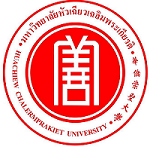กรุณาใช้ตัวระบุนี้เพื่ออ้างอิงหรือเชื่อมต่อรายการนี้:
https://has.hcu.ac.th/jspui/handle/123456789/3888| ชื่อเรื่อง: | Influence of Extraction Methods on Total Phenolic Content and Antioxidant Properties of Some of the Commonly Used Plants in Thailand |
| ผู้แต่ง/ผู้ร่วมงาน: | Noppawat Pengkumsri Kanittha Kaewdoo Wilaipan Leeprechanon Bhagavathi Sundaram Sivamaruthi นพวัฒน์ เพ็งคำศรี กนิษฐา แก้วดู วิไลพรรณ ลีปรีชานนท์ Huachiew Chalermprakiet University. Faculty of Pharmaceutical Sciences Huachiew Chalermprakiet University. Faculty of Nursing Huachiew Chalermprakiet University. Faculty of Pharmaceutical Sciences Chiang Mai University. Faculty of Pharmacy |
| คำสำคัญ: | Phenolic compound สารประกอบฟินอลิก Punica granatum ทับทิม Clitoria ternatea L. อัญชัน Hibiscus sabdariffa กระเจี๊ยบแดง Cleistocalyx operculatus มะเกี๋ยง Morus spp. หม่อน Antioxidants แอนติออกซิแดนท์ Plant extracts สารสกัดจากพืช Plants – Thailand พืช – ไทย |
| วันที่เผยแพร่: | 2019 |
| แหล่งอ้างอิง: | Pak. J. Biol. Sci., 22 (3): 117-126, 2019 |
| บทคัดย่อ: | Background and Objective: Several plants have been commonly used in Thailand for health improvement, but the phytochemical content and its bio-activities are not yet elucidated completely. The aim of this research was to study the influence of extraction method on total phenolic content (TPC) and antioxidant activity of representative plants such as Punica granatum, Hibiscus sabdariffa, Cleistocalyx operculatus (Roxb.) Merr., Clitoria ternatea Linn., Mulberry and Oryza sativa L. indica. Methodology: The samples were subjected to different extraction procedures. The TPC and phenolic compounds were determined by Folin-Ciocalteu colorimetric assay and HPLC, respectively. The antioxidant capacity of the extracts was measured by 2, 2-azino-bis-3-ethylbenzothiazoline-6-sulphonic acid (ABTS) and ferric reducing antioxidant power (FRAP) assays and ferrous ion (Fe2+) chelating assay. Results: The maximum TPC was observed in pomegranate peel (TTP) extract (0.1 M HCl: Ethanol extraction) and low TPC was recorded in aqueous extract of butterfly pea flower (BP) samples. The high content of protocatechuic, p-hydroxybenzoic acid were observed in pomegranate seed and seed coat (TTS). Gallic and syringic acids were found to be rich in pomegranate peel (TTP) and flower of butterfly pea (BP), respectively. Roselle flower samples (KJ) showed high content of chlorogenic, p-coumaric and caffeic acids. Conclusion: The maximum antioxidant activity was observed in extracts obtained by 0.1 M HCl: Ethanol extraction methods, especially pomegranate peel exhibited high free radical scavenging activity compared to that of the other samples. The results strongly revealed that the extraction method greatly influences the phytochemical content and bioactivity and strongly recommends that any plant samples, intended to study, must undergo several extraction processes to reveal the actual phytochemical content |
| รายละเอียด: | สามารถเข้าถึงบทความฉบับเต็ม (Full Text) ได้ที่ : https://scialert.net/fulltext/fulltextpdf.php?pdf=ansinet/pjbs/2019/117-126.pdf |
| URI: | https://has.hcu.ac.th/jspui/handle/123456789/3888 |
| ปรากฏในกลุ่มข้อมูล: | Pharmaceutical Sciences - Artical Journals |
แฟ้มในรายการข้อมูลนี้:
| แฟ้ม | รายละเอียด | ขนาด | รูปแบบ | |
|---|---|---|---|---|
| Influence-of-Extraction-Methods-on-Total-Phenolic-Content-and-Antioxidant-Properties.pdf | 63.61 kB | Adobe PDF | ดู/เปิด |
รายการทั้งหมดในระบบคิดีได้รับการคุ้มครองลิขสิทธิ์ มีการสงวนสิทธิ์เว้นแต่ที่ระบุไว้เป็นอื่น
